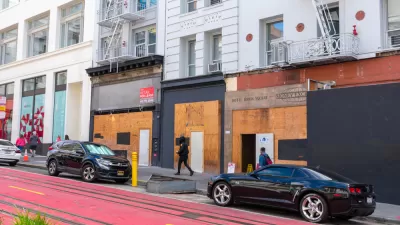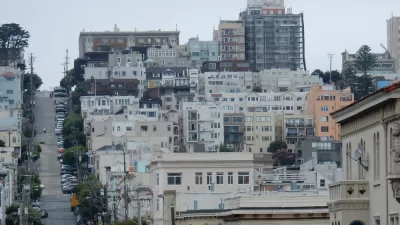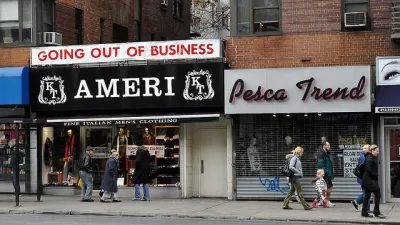Less than 3 percent of properties potentially subject to a new vacancy tax were filed as vacant in the last year, but empty storefronts in the city persist.

According to a San Francisco Chronicle article by Roland Li and Susie Neilson, a vacancy tax meant to encourage commercial landlords to rent out empty storefronts is yielding little revenue in its first year, with “only 2.6% of around 2,800 property parcels that were potentially subject to the tax … listed as vacant by tax filers for more than 182 days in the year.”
Amanda Fried, chief of policy and communications at the Office of the Treasure and Tax Collector, told the Chronicle, “This is not the audited information. This is not how many vacancies exist.”
The tax, passed in 2020 but put on pause until 2022 due to the Covid-19 pandemic, “is $250 per foot of a property’s outdoor street frontage for the first year, rising to $500 per foot in the second year of vacancy and $1,000 per foot in the third year.”
Supervisor Aaron Peskin, who sponsored the measure, “previously said the goal of the tax was to change landlord behavior and make them more willing to rent out spaces, rather than raise money.”
More recently, the city also passed a vacancy tax on residential properties, which real estate groups have sued to block.
FULL STORY: S.F. started taxing vacant storefronts. Here’s why only 74 owners and tenants have paid so far

Planetizen Federal Action Tracker
A weekly monitor of how Trump’s orders and actions are impacting planners and planning in America.

Chicago’s Ghost Rails
Just beneath the surface of the modern city lie the remnants of its expansive early 20th-century streetcar system.

San Antonio and Austin are Fusing Into one Massive Megaregion
The region spanning the two central Texas cities is growing fast, posing challenges for local infrastructure and water supplies.

Since Zion's Shuttles Went Electric “The Smog is Gone”
Visitors to Zion National Park can enjoy the canyon via the nation’s first fully electric park shuttle system.

Trump Distributing DOT Safety Funds at 1/10 Rate of Biden
Funds for Safe Streets and other transportation safety and equity programs are being held up by administrative reviews and conflicts with the Trump administration’s priorities.

German Cities Subsidize Taxis for Women Amid Wave of Violence
Free or low-cost taxi rides can help women navigate cities more safely, but critics say the programs don't address the root causes of violence against women.
Urban Design for Planners 1: Software Tools
This six-course series explores essential urban design concepts using open source software and equips planners with the tools they need to participate fully in the urban design process.
Planning for Universal Design
Learn the tools for implementing Universal Design in planning regulations.
planning NEXT
Appalachian Highlands Housing Partners
Mpact (founded as Rail~Volution)
City of Camden Redevelopment Agency
City of Astoria
City of Portland
City of Laramie





























